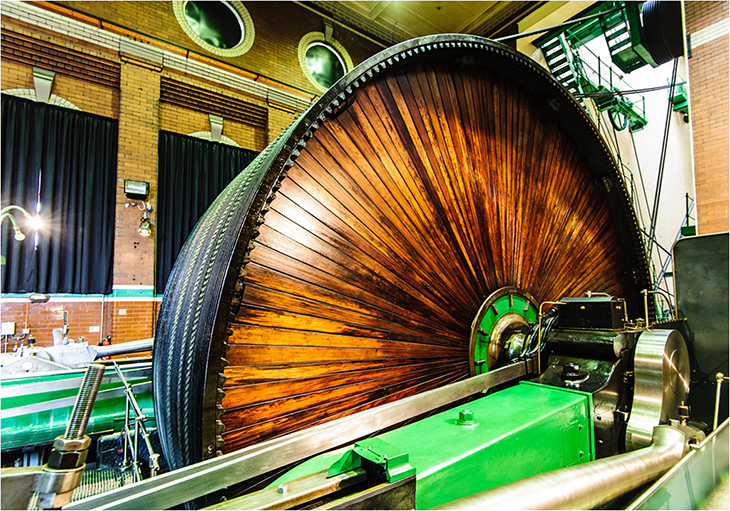Photo-a-Day (Thursday, 18th April, 2013)
Big wheel

A 26-foot flywheel with 54 ropes that runs at at 68 rpm.
Photo: Dave (Oy) (Nikon D700 with Nikon 16-35mm F/4 AF-S VR)
Wow.....big wheel indeed.....wonderful.....cheers!!!
During my time working at a demolition firm in the 60s, I, with others, cut a few of those wheels up as well as the rope races and line shafting,and machinery which were part and parcel of the system, these were also a small part of the overall destruction of a large part of our heritage, I also cut quite a few steam locos up.
Do I detect a little HDR?
Love this shot Dave. Cracking image shows every detail.
Nev: No HDR - just a few tweaks in Adobe Lightroom to give it a bit of impact :)
For definition of a flywheel see;-
http://en.wikipedia.org/wiki/Flywheel
Why is this called a flywheel on this engine when it isn`t. It is a drum and is no different from a colliery winding engine where the rope lifts the cage and is called a winding drum.
ernest, it may be a drum ,but it is also a flywheel since it stores energy
sanibel fred, you cannot use that argument. All rotating drums/objects "store energy" (although I don't like the term) but not all drums are, or can considered to be, flywheels.
The best that can be conjectured in this case, is that the inherent inertial properties of the drum design (i.e. its mass moment of inertia) together with the operating speed of the drum have a sufficient "flywheel effect" that a separate flywheel is not required. A flywheel (or flywheel effect) may or may not be required in this case and much would depend on the the complete power train and the loads and services imposed on the system as whole.
A pit winding drum collects & let out the rope, whichever way the cage is going.
A Flywheel, as in this instance, drives a set of endless ropes connecting to the mill driveshafts, which in turn drive the machinery all over the mill
Too much false colour. Spoils it for me.
I agree with you, John. The false colour makes it appear childish. Hardly 'professional' photography.